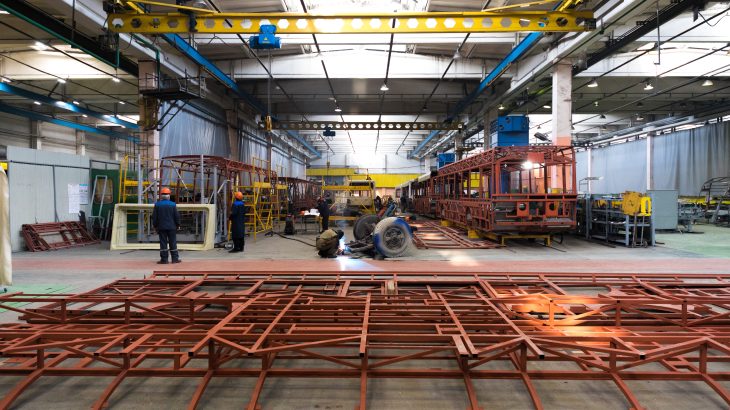
In the world of modern architecture and engineering, steel structures stand tall and proud as symbols of innovation, strength, and creativity. These structures ranging from soaring skyscrapers to intricate bridges – owe their existence to a meticulous and fascinating process that transforms raw materials into awe-inspiring edifices. Join us on a journey through the art of crafting steel structures, where science and imagination converge to shape the world around us.
The Genesis: Raw Materials
The process of creating steel structures begins with a fundamental ingredient: iron ore. Extracted from mines around the globe, iron ore is the primary raw material used in steel production. The iron ore undergoes a refining process to remove impurities, resulting in iron that serves as the foundation for steel.
Incorporating various elements like carbon, manganese, and other alloys, steel is created by carefully. Depending on the desired product, different grades of steel are produced, each with specific characteristics suited for applications.
From molten metal to solid foundation
Once the steel composition is perfected, the next step involves melting the alloy. This is typically done in a blast furnace, where intense heat transforms the solid steel into a molten state. In this liquid form, the steel can be further refined to achieve the desired composition and quality.
After refining, the molten steel is cast into various shapes. One common method is continuous casting, where the liquid steel is poured into moulds to create solidified shapes, such as rectangular blooms or long beams. These primary shapes serve as the foundation for the construction of larger steel components.
Shaping and Forming
With the primary shapes in hand, the process of further shaping and forming begins. This stage involves converting the raw steel into specific components that will eventually compose the structure. Advanced technologies like rolling, forging, and extrusion are employed to reshape the steel, ensuring precision and consistency in dimensions.
For instance, rolling mills are used to flatten steel into sheets or to shape it into beams and columns. These machines exert tremendous pressure to deform the steel, allowing for the creation of a wide range of profiles and sizes.
Assembly and Fabrication
Once the steel components are shaped, they are meticulously assembled into the framework of the structure. This step involves welding, bolting, or riveting the pieces together to create a unified whole structure. Welding plays a critical role in joining steel components securely and ensuring structural integrity.
Modern fabrication processes often involve cutting-edge technologies such as computer-aided design (CAD) and computer numerical control (CNC) machines. These technologies enable precise measurements, intricate detailing, and efficient assembly, reducing waste and enhancing the quality of the final product.
Strengthening through heat treatment
To enhance the mechanical properties of certain steel components, heat treatment is employed. This process involves subjecting the steel to carefully controlled heating and cooling cycles to alter its microstructure. The result is increased strength, durability, and resistance to various forces, making the steel structure capable of withstanding the challenges it will face throughout its lifespan.
Protecting against corrosion
Steel structures, especially those exposed to the elements, require protection against corrosion, which can weaken the material over time. Various methods are employed to prevent or mitigate corrosion, including galvanization, where a layer of zinc is applied to the steel surface to act as a barrier against corrosive agents.
The finale step: Erection and Beyond
With all the components fabricated, assembled, and treated, it’s time for the grand finale: erecting the steel structure. This stage requires precision engineering and careful planning, often involving massive cranes and skilled operators. The components are lifted into place and secured, gradually forming the skeleton of the final structure.
But the process doesn’t end with construction. Steel structures require ongoing maintenance to ensure their longevity. Regular inspections, repairs, and corrosion protection measures are essential to keep these architectural marvels standing tall for generations to come.
A fusion of Science and Art
As we marvel at the towering skyscrapers and intricate bridges that surround us, let us also appreciate the journey that transforms raw steel into the iconic structures that shape the modern world. The next time you gaze upon a steel marvel, you’ll see not just a building, but a symphony of science, art, and human achievement.

